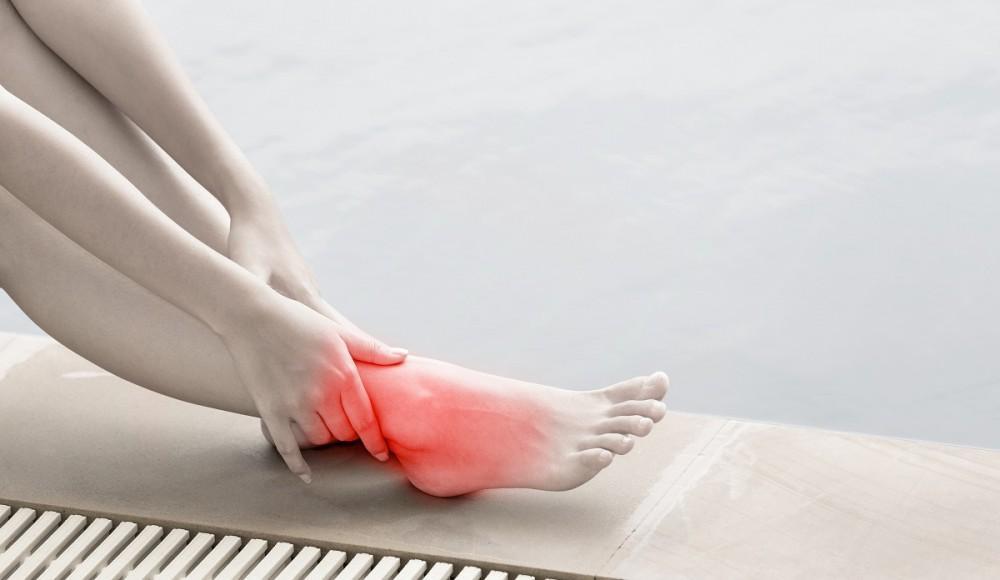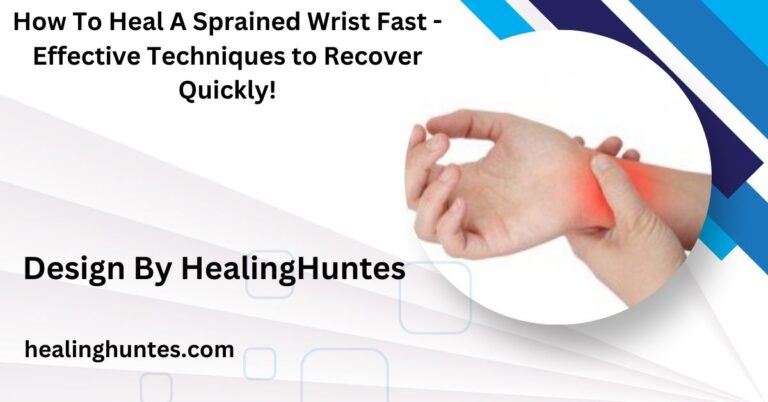How To Heal A Sprained Foot Overnight – Overnight Remedies That Work!
A sprained foot may not heal completely overnight, but using ice, elevation, compression, and rest can significantly reduce pain and swelling, setting the stage for faster recovery.
This guide provides detailed steps and practical advice to help your sprained foot heal faster.
Understanding a Sprained Foot:

A sprained foot happens when the ligaments supporting the bones are stretched or torn due to an awkward movement, sudden twist, or fall. This injury can vary in severity, from mild ligament stretching to complete tears, each requiring different care levels. Recognizing the signs of a sprain is essential for effective treatment.
Symptoms of a Sprained Foot:
The symptoms of a sprained foot typically include pain, swelling, bruising, and difficulty bearing weight on the affected foot. Severe cases may involve noticeable instability or inability to move the foot. Understanding the level of your injury helps determine how aggressive your treatment should be.
Immediate Steps for Relief:
When you first sprain your foot, immediate action is crucial to minimize swelling and pain. Rest your foot completely, avoiding any weight on it, and apply an ice pack wrapped in a cloth for 15–20 minutes to reduce inflammation. Compression with a snug bandage can provide support, while elevating the foot above heart level encourages better blood flow. These steps set the stage for effective overnight healing.
Resting and Protecting the Foot:
Avoid putting any weight on the injured foot as soon as possible. Rest is critical during the initial stages to prevent further strain on the ligaments. Use supportive devices like crutches to minimize pressure if needed.
Also Read: How To Treat Wounds That Won’t Heal – Best Practices Explained!
Reducing Swelling with Ice:
Apply an ice pack wrapped in a cloth to the affected area for 15 to 20 minutes every hour. This reduces swelling and numbs the pain, making it easier to manage discomfort.
Using Compression for Support
Wrap the foot in an elastic bandage to provide gentle compression. This helps control swelling and offers extra stability. Ensure the bandage isn’t too tight to maintain proper blood flow.
Overnight Healing Methods:

Preparing your foot for overnight recovery can significantly improve its condition. Soak your foot in warm water with Epsom salt before bed to relax the muscles and reduce tension. Massage the affected area with a soothing ointment or essential oil to alleviate pain and promote relaxation. Elevate your foot on a pillow while sleeping to reduce swelling and maintain stability throughout the night.
Warm Soaks to Relax the Foot:
Before bed, soak your foot in warm water mixed with Epsom salt for about 20 minutes. The warmth soothes tense muscles and enhances circulation, while the Epsom salt reduces inflammation.
Application of Healing Ointments:
After soaking, gently massage the sprained foot with a healing ointment or essential oil like lavender or eucalyptus. This alleviates pain, relaxes the muscles, and promotes faster healing. Avoid applying excessive pressure during the massage.
Proper Sleeping Position:
Elevate your foot on a pillow while sleeping. Keeping the foot above heart level reduces swelling and encourages blood flow to the area. Use a soft pillow for comfort and stability throughout the night.
Physical Therapy Exercises:
Once the swelling decreases, gentle exercises help regain mobility and prevent stiffness. Start with simple movements like toe wiggles or ankle rotations to stimulate blood flow. Gradually include stretching exercises such as pointing and flexing your toes to keep the ligaments supple. Perform these exercises slowly and stop if you feel any pain or discomfort.
Also Read: How Long Does A Pulled Tooth Take To Heal – Tooth Extraction Healing!
Gentle Movements to Maintain Mobility:
Start with simple movements like wiggling your toes or rotating your ankle in small circles. These exercises stimulate blood flow and help maintain flexibility without straining the ligaments. Avoid any exercises that cause pain or discomfort.
Stretching for Recovery:
Gently stretch your foot by pointing and flexing your toes. This keeps the ligaments supple and aids the healing process. Perform these stretches gradually, increasing intensity only as your foot becomes more comfortable.
Dietary Support for Recovery:

A nutrient-rich diet can accelerate the healing process for a sprained foot. Include vitamin C-rich foods like oranges and bell peppers to support collagen production for ligament repair. Lean protein sources such as chicken or tofu aid in muscle recovery, while omega-3 fatty acids from fish oil reduce inflammation. Staying hydrated ensures proper circulation and cellular repair.
Nutrients That Aid Healing:
Include foods rich in vitamin C, such as oranges and strawberries, to boost collagen production for ligament repair. Protein from lean meats, fish, or plant-based sources helps rebuild damaged tissues, while omega-3 fatty acids from fish oil reduce inflammation.
Hydration for Recovery:
Drink plenty of water to stay hydrated, as proper hydration is essential for optimal cell repair and circulation. Combining hydration with a nutrient-rich diet ensures your body has everything it needs to heal.
Also Read: Greater Healing Potion – Natural Remedies for Faster Recovery!
What to Avoid After a Sprain:
Certain actions can worsen your condition and delay recovery. Avoid applying heat during the first 48 hours, as it may increase swelling. Resist the urge to walk on the injured foot too soon, as this can cause further damage. Lastly, monitor your symptoms closely and consult a doctor if your pain worsens or swelling doesn’t improve.
When to Seek Medical Attention:
Although home remedies work well for mild sprains, severe cases require medical attention. If you experience intense pain, difficulty bearing weight after two days, or increasing swelling and bruising, consult a healthcare professional. A doctor can perform imaging tests like X-rays to rule out fractures or severe ligament tears.
FAQ’s
1. Can I heal a sprained foot in one night?
Complete healing overnight isn’t possible, but taking proper care can reduce swelling and pain significantly within hours.
2. Is massaging a sprained foot helpful?
Yes, gentle massages with soothing oils or creams can promote circulation and relieve tension, aiding recovery. Avoid massaging directly on painful areas.
3. Should I keep my foot elevated all night?
Keeping your foot elevated while sleeping is highly effective for reducing swelling and encouraging blood flow. Use a comfortable pillow for support.
4. When is it safe to walk on a sprained foot?
Walking should be avoided until pain and swelling have subsided. Gradually reintroduce weight-bearing activities as your foot heals.
5. Can I use heat therapy on a sprained foot?
Heat therapy should be avoided during the initial 48 hours, as it can worsen swelling. Stick to cold packs for relief during this time.
Conclusion
Healing a sprained foot overnight requires a combination of immediate care, targeted overnight strategies, gentle exercises, and proper nutrition. While complete recovery in a single night is unlikely, these steps can significantly reduce pain and swelling, setting the foundation for faster healing. Remember to prioritize rest, protect the injured foot, and consult a healthcare professional if symptoms persist or worsen. With patience and consistent care, you’ll be back on your feet sooner than you expect.






